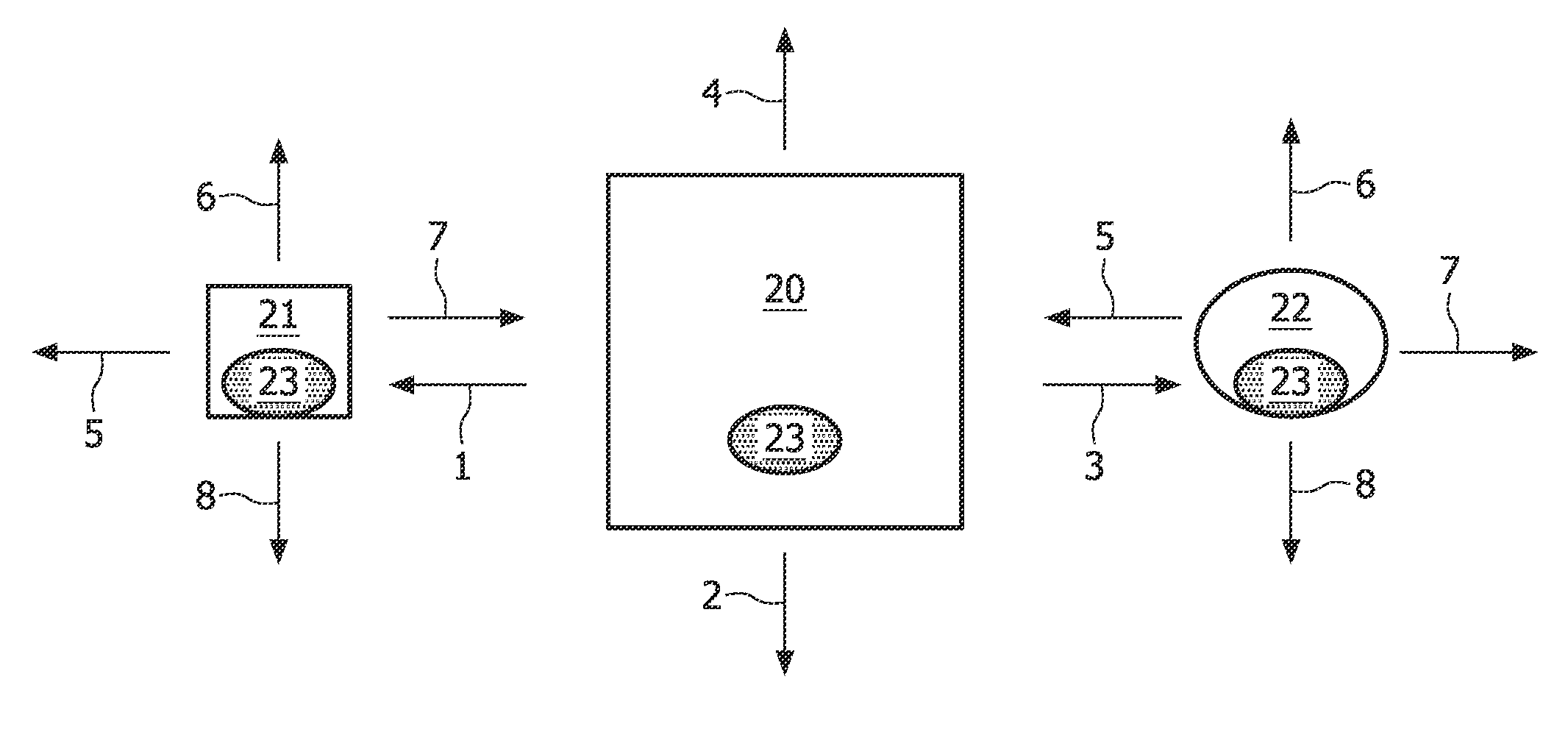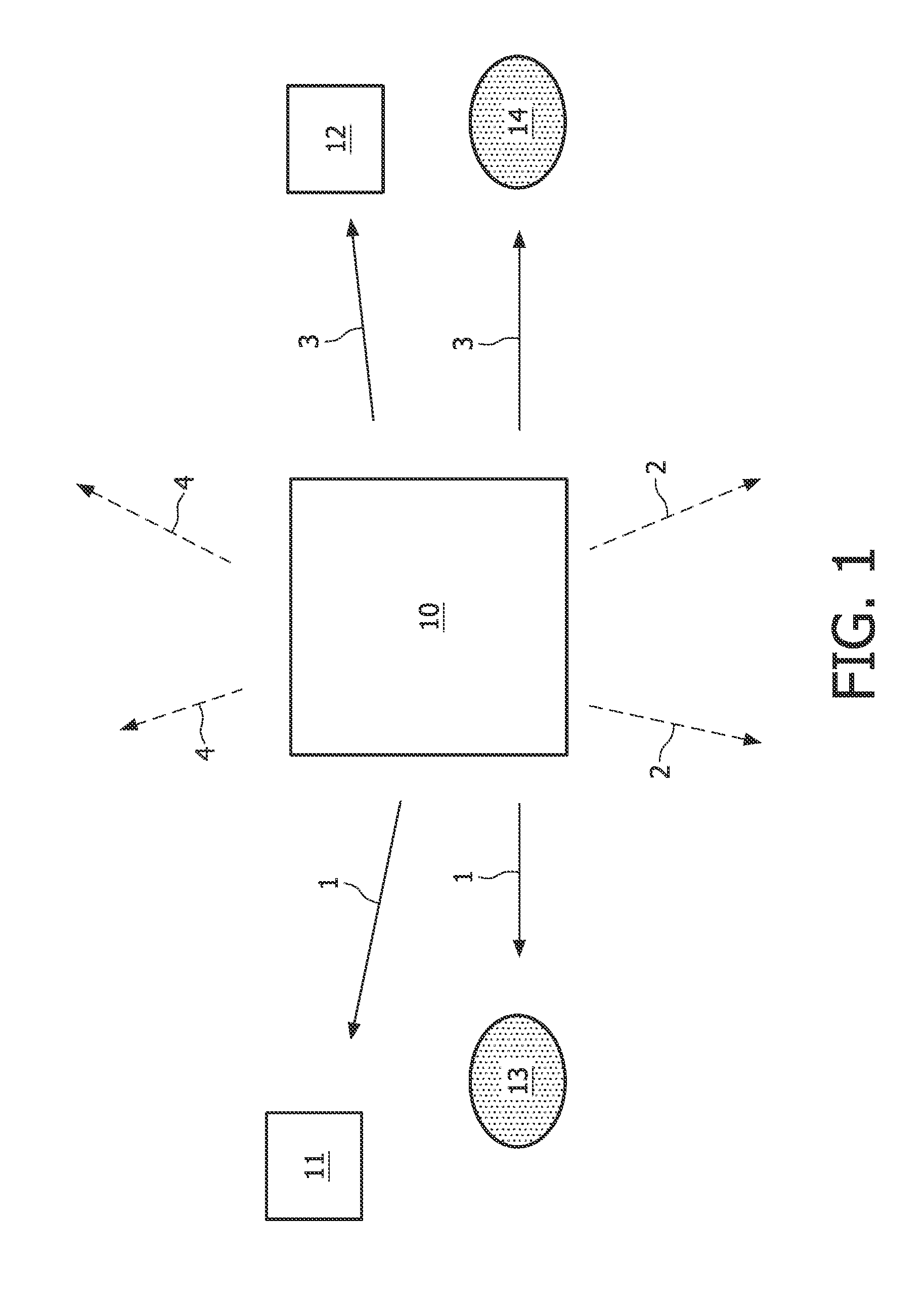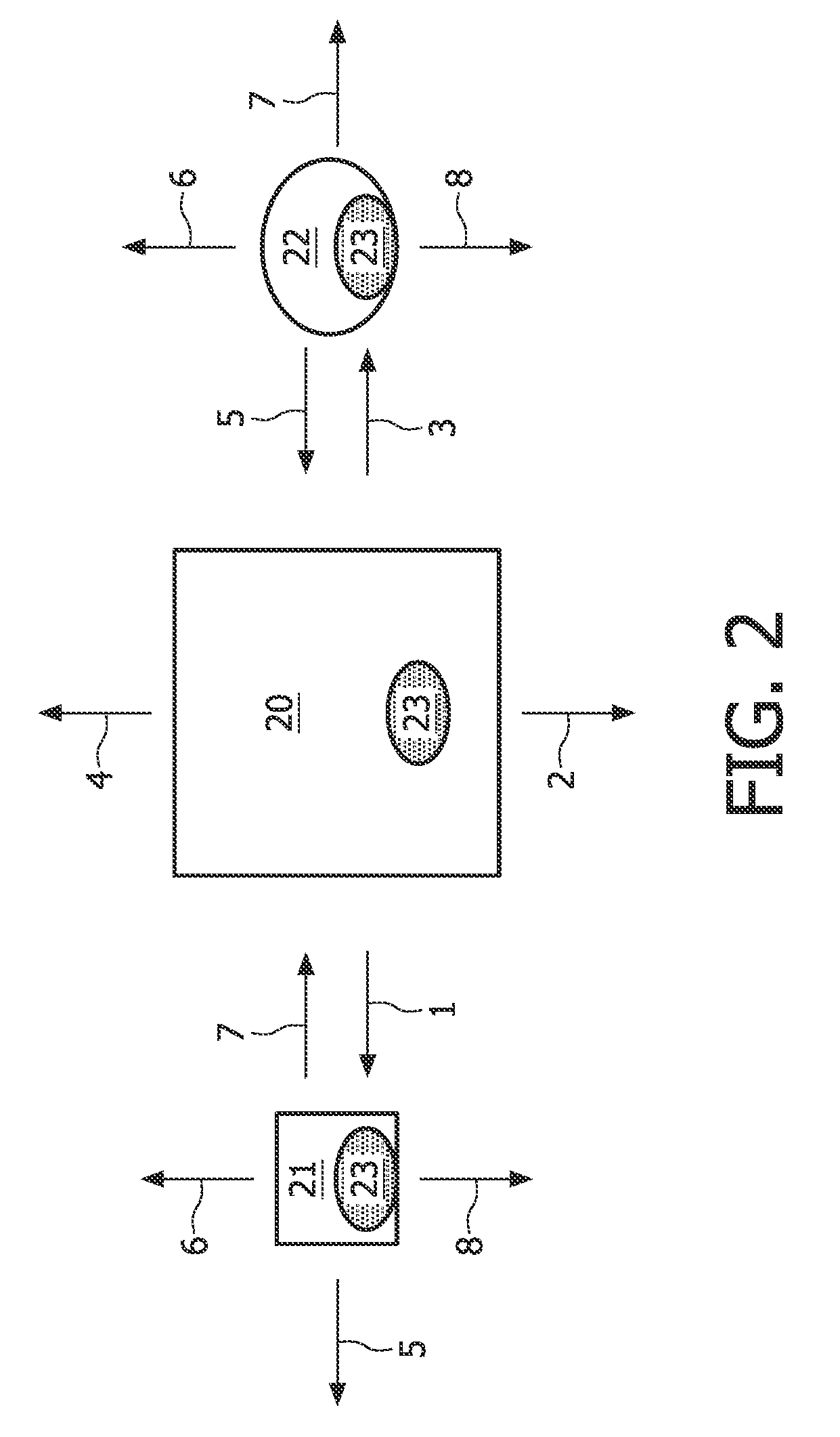Light-based communication for configuration of light-sensing peripherals
a technology of light-sensing peripherals and light-based communication, which is applied in the field of light-based communication, can solve the problems of complex process to make them all work properly, and the non-intuitive configuration process lacking simplicity, and achieves the effect of high strength
- Summary
- Abstract
- Description
- Claims
- Application Information
AI Technical Summary
Benefits of technology
Problems solved by technology
Method used
Image
Examples
second embodiment
[0037]FIG. 2 illustrates the central light-emitting unit 20 and the peripherals 21, 22 according to the present invention. The central light-emitting unit comprises embedded identifiers in light 1, 2, 3, 4 as well as means for receiving embedded identifiers in light 23. The peripherals are also capable of transmitting identifiers 5, 6, 7, 8 and they comprise means for receiving identifiers or spatial configuration information embedded in light 23. Consequently, each device may simultaneously function as both a light-sensing device and a light-emitting device. Hence, each particular device may determine its relative location with respect to another device and as such create a full positional map of all devices which are connected together via a wired or wireless network.
third embodiment
[0038]FIG. 3 illustrates the present invention. FIG. 3 shows a room where the central light-emitting unit is a 3D display screen 30, one light-sensing device contained in a pair of headphones 31 and another light-sensing device contained in a remote control 32. When the headphones are moved relatively to the screen 33a, 33b, different identifiers 1, 2, 3 or 4 will be received along with different audio data. As a result, a 3D sound experience will be created next to the 3D visual experience of the screen. The remote control can in this embodiment also act as a triggering device handled by a user for controlling transmission of identifiers / configuration data of the central light-emitting device.
PUM
 Login to View More
Login to View More Abstract
Description
Claims
Application Information
 Login to View More
Login to View More - R&D
- Intellectual Property
- Life Sciences
- Materials
- Tech Scout
- Unparalleled Data Quality
- Higher Quality Content
- 60% Fewer Hallucinations
Browse by: Latest US Patents, China's latest patents, Technical Efficacy Thesaurus, Application Domain, Technology Topic, Popular Technical Reports.
© 2025 PatSnap. All rights reserved.Legal|Privacy policy|Modern Slavery Act Transparency Statement|Sitemap|About US| Contact US: help@patsnap.com



